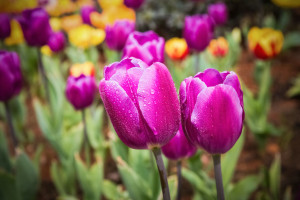 When you plan a new garden or gather ideas for re-designing an existing garden, there are many things to consider. Location, color, height, depth, scented or un-scented, free-flowing or structured, edible or ornamental are all choices and possibilities. You can also consider the type of metal garden markers that would best fit the style of your landscape. Different plate angles, labels and sizes of markers are all things to consider with your landscape design.
When you plan a new garden or gather ideas for re-designing an existing garden, there are many things to consider. Location, color, height, depth, scented or un-scented, free-flowing or structured, edible or ornamental are all choices and possibilities. You can also consider the type of metal garden markers that would best fit the style of your landscape. Different plate angles, labels and sizes of markers are all things to consider with your landscape design.
Good gardeners are often experimenters. They know that sometimes you can just stick a plant in the ground and it will take care of itself. It might not have enough sun, but it will still work in the shade. The soil may be a little too damp, but it will survive with a few less blossoms. But when you have the time to actually plan a new little garden patch, you can use location and other elements to set up the most hardy and healthy garden.
You can ask yourself what plants will flourish the best in your region’s climate zone. What plants will flourish the best in my yard’s soil so that I don’t have to amend it much or at all? If it’s in the sun or shade, which plants produce best in those conditions? These are a few of the common questions gardeners consider before planting.
Another planning consideration is examining your yard’s natural features before purchasing your plants. Does your yard have steppes or slopes or is it flat? Plants that cascade are perfect for hiding old retaining walls or give interest to sloping yards. Shrubs, ornamental grasses and flowers with extensive root systems may also aid yards with slopes as they can hold down the soil and reduce erosion.
Do you have an abundance of purple blooms in your yard, but no yellow? Color combinations are interesting in gardens. You may choose to cluster cool-toned blooms like blue and purple or warm-toned blooms like yellow and red. The placement of these cool tones and warm tones in a garden also makes a difference in the atmosphere of your garden. Exuberant warm tones can be “toned down” by placing them in back rows, while cool tones can create a calming effect when clustered up close to you and the edge of the border.
Once you’ve designed your garden, it’s time to choose your perfect style of metal garden markers. Petite plants may look better with more slender and petite plant markers, while large full plants may need more substantial markers in order to stay rooted. Stroll through your pathways and imagine glancing down to read the names of your plants. This can help you determine whether you want plates that angle behind or in front of your metal garden marker posts.
The classic 100 percent stainless steel plant markers of Kincaid Plant Markers would fit the style of any garden. Whether you choose a formal English garden or a natural wildflower garden, our metal garden markers will complement your various flowers with a simple silver style. Signs with too much ornamentation may make a garden look cluttered or distract from your garden plants. We have designed a slender durable sign that will never rust, tarnish or crumble under the forces of nature or time.
